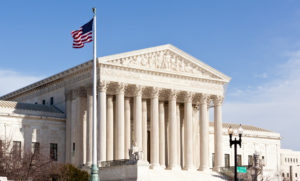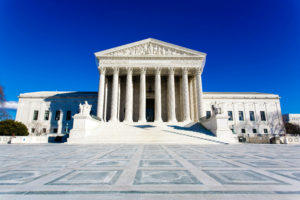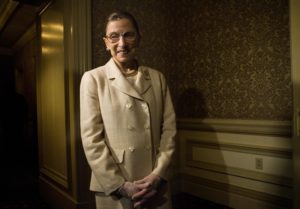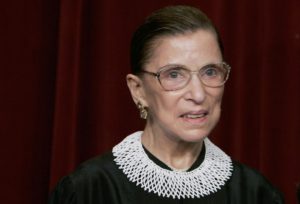Court packing explained
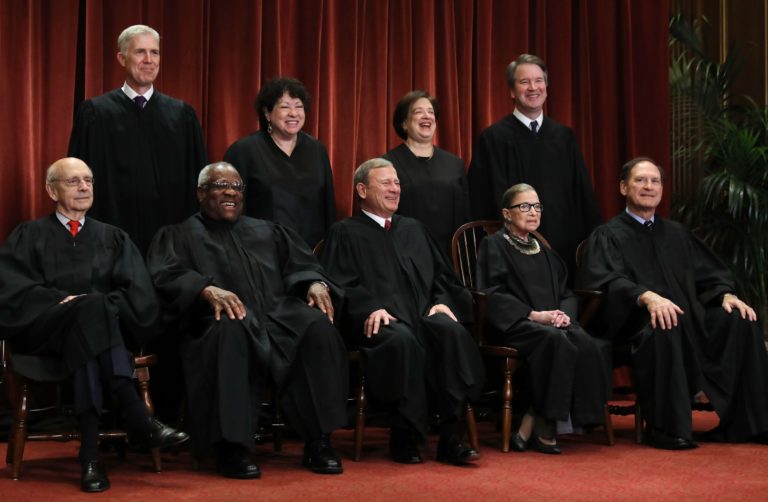
With the passing of Supreme Court Justice Ruth Bader Ginsburg just a few weeks before the 2020 presidential election, followed swiftly by the nomination and confirmation of Amy Coney Barrett as the Court’s ninth justice, court packing is experiencing a revival in the national conversation. But what exactly is “court packing”? What does the Constitution say about it? Has it been done before? A look back at the Supreme Court’s history can give some insight into all the controversy.
It’s the election of 1800. It’s very messy. John Adams and Thomas Jefferson are name-calling. Jefferson wins out. He almost loses to Aaron Burr (his own vice presidential running-mate) but he makes it. But before Jefferson can be sworn in, Adams wants to thwart Jefferson’s ability to nominate Supreme Court justices. Right before Jefferson is inaugurated, Adams has Congress pass an act totally throwing the judiciary into disarray. He adds new seats onto the lower courts and takes one seat off of the Supreme Court so Jefferson can’t nominate anyone.
This was called the Midnight Judges Act, because at midnight, the night before Jefferson’s inauguration, Adams is signing new judges into law. He’s just straight nominating all of the Federalist judges he can to thwart Jefferson.
This great moment in history is America’s first court packing, or unpacking, as it were.
Court packing is one of those words people keep using, but it doesn’t mean what they likely think it means. Court packing refers to adding seats to the bench to fill them with judges of one’s own choosing to change the ideological composition of the judiciary. It’s not the same thing as just nominating judges that one likes—that’s just the normal confirmation process.
The current Supreme Court has nine justices, but it doesn’t have to be that way. And in fact, it wasn’t always that way. The Constitution is absolutely silent on the number of justices. Instead, Congress has chosen that number through history by means of various judiciary acts. Congress set the first Supreme Court at six justices, but it soon changed that with the Judiciary Act of 1801 (that’s the very interesting story of Adams and Jefferson).
After all of that, Jefferson came into office and he basically just undid the whole thing. He passed a new Judiciary Act, which restored the bench. The law added back that justice that Adams had tried to take away, and it even changed the date of the Supreme Court term so that it eliminated the next term and none of the judges that Adams had nominated could even take their seats.
After Jefferson restored the bench to six, it fluctuated based on how many circuit courts there were, until the country entered Reconstruction, during which Congress passed a law, again, reducing the number of Supreme Court justices from 10 to seven. This occurred because lawmakers were fearful Andrew Johnson was going to undo all of the good that Congress had done with its Reconstruction measures and all of the rights that it had passed to protect those freed from slavery. And so they actually “court unpacked” in order to prevent Johnson from nominating anyone who might thwart Congress’ Reconstruction efforts.
From there, the number of seats was again brought back up to nine, where it stayed pretty stable until FDR’s fireside chats and his court packing plan.
Picture yourself in 1937, you’re cozied up to the fire, and you hear President Franklin D. Roosevelt’s voice come on the radio in one of his infamous fireside chats. And from the outset, FDR is beating up the Supreme Court. He says, our three branches of government are like three horses. And two of those horses are pulling their weight. And one of those horses is not. And that’s the judiciary because they keep striking down all of these laws that I’m passing that are good for the people and that are meant to help us get out of the Depression. He says, “Just last week, they had a five-four decision. They almost struck down one of my laws, and that’s not right.”
So what was his plan? His plan was to allow presidents to add a Supreme Court justice any time a justice turns 70 and chooses not to retire. His rationale for this was twofold. One point was that it’s good for the country. He said, “I’m just trying to help the country. And the justices are thwarting me. And I want some justices who are going to uphold my laws.”
But his other reasoning was economics. He said that “We’ve got a bunch of old justices on the bench, and they’re really slowing down the wheels of the judiciary. If we had some younger guys,” we could move things along quite quickly. “It would be more efficient and you would save money.”
So he was really appealing to both sides of the aisle here. He was giving one argument for upholding the laws that he liked, and giving one argument for saving money, saving some cash by adding some young blood. In fact, he actually conveyed “young blood” when he said, “We need some young people on the bench so that we don’t only have hardened arteries on the bench.”
Now, of course, we all know the end of this story. It is the infamous switch in time that saves nine. It is said that Justice Owen Roberts changed his vote last minute in the West Coast Hotel Co. v. Parrish case to side with the liberal justices and to stave off this court packing plan. But actually, in hindsight, with the benefit of the papers that have been released from the justices, we know that he was already going to vote that way before FDR announced his plan.
This just goes to show the danger of court packing. Because FDR had introduced it, people saw the justices’ decisions through that political lens, even when it wasn’t true.
All in all, court packing is dangerous because it politicizes the Court, does damage to the rule of law, and to the perception of the judiciary.
The founders knew there was no way to anticipate the size of the growing country (and in turn a growing judiciary), so the Constitution leaves it to Congress to decide how many federal courts there are, how many judges sit on each court, and how many Supreme Court justices there are. The founders trusted Congress to decide the number of justices in a responsible way.
And that’s probably right. Congress can change the courts if need be, but they shouldn’t do it solely for ideological reasons. When they’re doing it solely to change the outcome of cases that come before the Supreme Court, that does long-term damage to the perception of the Court as a neutral arbiter of rights.


